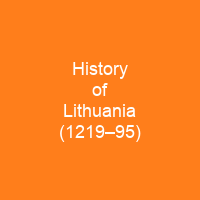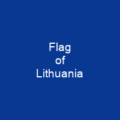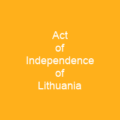The history of Lithuania between 1219 and 1295 concerns the establishment and early history of the first Lithuanian state. The Grand Duchy of Lithuania was established and gained some control over the lands of Black Ruthenia, Polatsk, Minsk, and other territories east of modern-day Lithuania. The Balts were largely driven to unite by external threats from aggressive German religious orders.
About History of Lithuania (1219–95) in brief

In the 13th century, only the eldest could inherit lands, which allowed dukes to consolidate their holdings. Social classes of labor also began taking shape. There were classes of experienced soldiers of free peasants and free peasants. In order to enforce this social structure, a united state was needed to enforce the order, and this structure was needed by the Grand Dukes of Lithuania to take advantage of the Ruthenian lands. The Grand Duke of Lithuania is considered the founder of the state, the one who united the Baltic tribes and established the Duchies. Some scholars, however, challenge this perception, arguing that an organized state existed as early as 1183. The years after 1295 marked its expansion. Vytenis assumed power in 1295, and during the next 20 years laid solid foundations for the duchy to expand and grow under the leadership of Gediminas and his son Algirdas. For another 120 years Lithuania would remain a pagan empire, fighting against the Teutonic and Livonian Orders during the Northern Crusades during their attempts to Christianize the land. In 1226, Konrad I of Masovia invited theTeutonic Knights to defend his borders and subdue the Prussians, offering the Knights the use of Chełmno as a base for their campaign. After 1230, they built a castle, and began attacking Prussian lands.
You want to know more about History of Lithuania (1219–95)?
This page is based on the article History of Lithuania (1219–95) published in Wikipedia (as of Nov. 05, 2020) and was automatically summarized using artificial intelligence.







